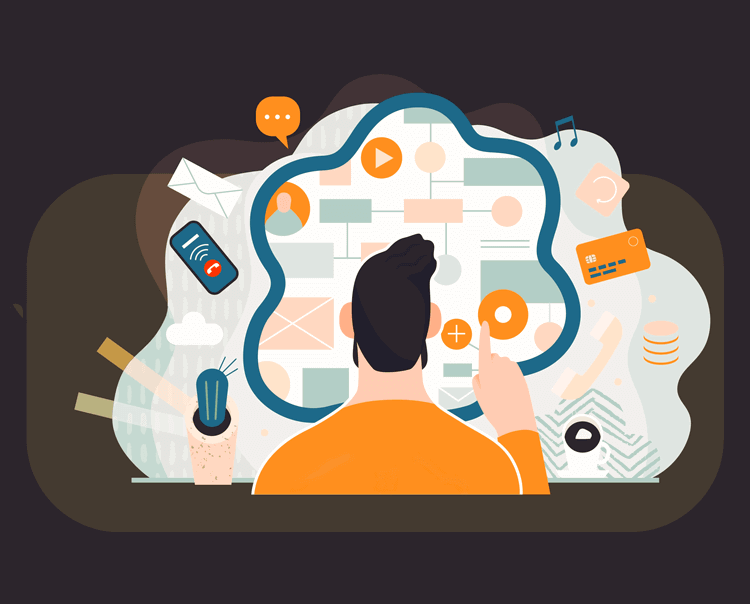
What is customer experience software?
CX software is all about giving businesses tools to make dealing with customers better on all fronts. It’s about gathering customer information, deciphering its meaning, and utilizing it to make things smooth and personal, so people stay and sales increase.
Instead of having data scattered all over the place, CX software puts everything together—like what’s in your CRM, customer feedback, and data analysis. This makes it easier to see the whole picture. Businesses can then jump on problems fast, talk to people like they know them, guess what customers want, and stop small issues from turning into big ones. For many organizations, investing in customer experience management software is what makes this level of consistency and personalization possible.
Key categories of customer experience software
CX software isn’t just one thing. It’s made up of a bunch of categories, each focusing on a different part of the customer experience:
- Feedback and Survey Tools: Gather customer opinions, analyze them, and find out where you can do better.
- CRM Systems: Keep track of customer data, interactions, and engagement over time.
- Analytics Platforms: Provide real-time insights into customer sentiment, behavior, and trends.
- Reputation Management Tools: Track online reviews and respond before they damage your brand.
- Case Management Systems: Assign, track, and resolve customer issues in a smooth way.
When these tools all work together in one ecosystem, businesses can make sure the customer experience feels seamless—no matter the channel.
Why is customer experience software important?
CX software matters more than people think. Without it, businesses often end up with scattered data, missed opportunities, and customers getting inconsistent service. Here’s what makes it important:
- Better Customer Satisfaction & Loyalty
When businesses meet customer needs quickly, relationships grow stronger, loyalty improves, and churn goes down. - Personalized Interactions
Using data-driven insights, companies can send tailored messages and services that actually make customers feel special. - Centralized Data
Instead of juggling different records, CX software consolidates everything into one place. That means fewer errors and more consistency. - Real-Time Insights
Businesses can instantly see what customers feel and how they behave, and act before small issues turn big. - Easier Feedback Management
Automated surveys and analysis mean companies don’t sit on negative feedback—they address it fast. - Efficiency Boost
With workflows and tasks automated, teams save time and reduce errors, while focusing more on real customer engagement.
Must-have features in CX software
To be truly useful, CX software should come with some non-negotiable features. Here’s a breakdown:
User & Location Management
Easily manage users, roles, and multi-location structures with Intouch CX. Customize access, ensure consistent reporting, and segment data with tags and attributes for better insights.
Survey & Feedback Integration
Collect customer input seamlessly with built-in survey tools. Features like sentiment analysis and IntouchSurvey™ help you uncover emotions, identify issues, and improve experiences across all locations.
Case Management
Track, assign, and resolve issues efficiently. Monitor time to resolution, automate reporting, and ensure teams act quickly—keeping every location compliant and consistent.
Automation
Boost efficiency with automated workflows and digital checklists. From daily reminders to complex business rules, IntouchCheck helps you maintain high standards without constant oversight.
Data Transfer
Keep data accurate and consistent with APIs, webhooks, and imports. The Intouch platform ensures smooth migration and integration across all your tools.
Analytics & Reporting
Turn data into action with Intouch Intelligence. Combine surveys, audits, and external sources into one platform for insights that drive smarter decisions and faster improvements. This is where customer experience analytics play a key role in uncovering trends and shaping business strategies.
Reputation Management
Protect and grow your brand image. Monitor sentiment, track competitors, listen to social conversations, and manage listings—all from one central hub.
The future of customer experience software
Customers want more all the time, so customer experience tools are adding AI, automation, and smart predictions. Things like chatbots that answer right away, programs that understand how people talk, and guessing what customers want are now normal.
If companies buy customer experience tech now, they’ll be in a good spot later. These days, how things feel to a customer matters as much as what they cost or how good they are.
Conclusion
Customer experience software isn’t just about handling interactions; it’s about making real relationships. If you want to personalize stuff, make things run automatically, handle your reputation, or look at your data, the correct customer experience software makes sure every customer feels heard and appreciated. And that helps keep those customers.
